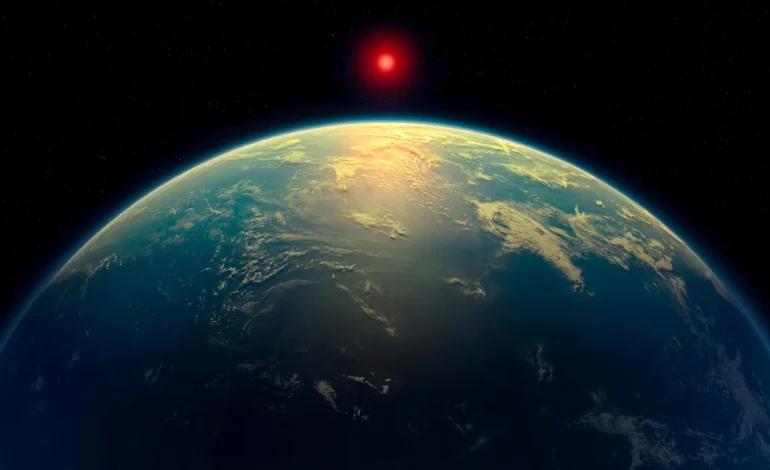In a groundbreaking discovery, scientists have uncovered what may be the strongest evidence yet of life beyond our solar system, based on observations of an exoplanet located 124 light-years away.
Using NASA’s James Webb Space Telescope, researchers detected chemical markers in the atmosphere of K2-18b, an exoplanet that may harbor conditions conducive to life. These markers, dimethyl sulfide (DMS) and its near-identical counterpart, dimethyl disulfide (DMDS), are gases produced by biological activity on Earth, primarily by marine phytoplankton, algae, and seaweed.
K2-18b, which was first discovered by NASA’s Kepler mission in 2015, is a sub-Neptune class planet located in the habitable zone of a red dwarf star. Its size and orbit suggest that it could support an ocean beneath its atmosphere, making it a potential “hycean world”—a type of exoplanet with a hydrogen-rich atmosphere and vast liquid oceans. These factors make K2-18b an intriguing candidate in the search for extraterrestrial life.
The Cambridge University-led team behind the discovery is cautious, however. While the detection of DMS and DMDS could indicate biological processes, it is not conclusive proof of life. The gases may also have an abiotic origin, and scientists stress that further observations and data are needed to confirm these findings. According to Nikku Madhusudhan, the study’s lead author, there is still a 0.3% chance that the observations are a statistical anomaly, underscoring the need for caution.
The presence of DMS and DMDS in K2-18b’s atmosphere, at concentrations significantly higher than those found on Earth, has sparked excitement among researchers. However, as Madhusudhan and other experts have pointed out, the detection is a “big if,” and more research is required to determine whether the chemicals truly indicate biological activity or if they are the result of a previously unknown chemical process.
Despite the uncertainty, this discovery represents a significant step forward in the search for life beyond Earth. If these findings are confirmed, it could mark a transformational moment in our understanding of the universe and our place within it.
The study, published in The Astrophysical Journal Letters, adds to previous findings from 2023, which suggested the presence of carbon-based molecules in K2-18b’s atmosphere. While the new evidence is compelling, researchers urge caution before claiming definitive proof of life, as the detection of a single biosignature does not guarantee the existence of living organisms.
The journey to confirm these results will involve further observations and experiments. Scientists continue to investigate other potential sources for the observed chemical markers, and independent verification from other research teams will be crucial in strengthening the case for life on K2-18b.
In the broader context, the discovery of potential biosignatures on an exoplanet is considered one of the “holy grails” of exoplanet science.
With input from the Washington Post, CNN, and NBC News.










The latest news in your social feeds
Subscribe to our social media platforms to stay tuned